Whales & Glaciers: Unveiling Antarctica's Neumayer Channel
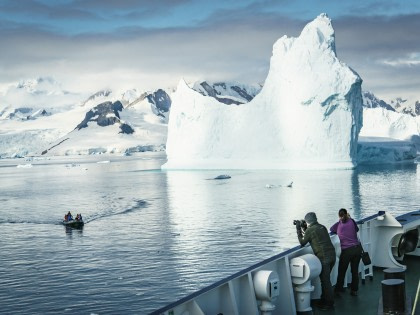
Introduction to Neumayer Channel
The significance and location of Neumayer Channel
Located in Antarctica's Palmer Archipelago, the Neumayer Channel is a narrow waterway that separates Anvers Island and Wiencke Island. The channel, named after the German polar explorer Georg Balthazar von Neumayer, is approximately 25 kilometres long and around 2 kilometres wide. Neumayer Channel is a popular destination for tourists and researchers due to its stunning natural scenery and unique wildlife.
Ecological importance of Neumayer Channel
Neumayer Channel is not only a visually captivating location, but it also holds great ecological importance. The pristine waters and rugged landscapes of the channel support a diverse array of marine life. Here are some key ecological features of the Neumayer Channel:
-
Marine Biodiversity: The channel is home to several species of marine animals, including seals, sea birds, and whales. Visitors can spot Antarctic fur seals and Gentoo penguins basking in the sun on the ice floes. These creatures rely on the channel's rich waters for food and shelter.
-
Algal Communities: The channel's surrounding waters have a high abundance of algae, which serve as the foundation for the entire marine food chain. These small organisms provide nourishment for larger marine animals, contributing to the overall ecosystem health.
-
Krill Population: Neumayer Channel is an important feeding ground for Antarctic krill, a small crustacean that plays a crucial role in the Antarctic food web. Krill forms the primary diet for many marine predators, such as seals, penguins, and whales. The well-being of these species depends on the availability of krill in the channel.
-
Research Opportunities: Due to its rich biodiversity and relatively pristine environment, the Neumayer Channel is a prime location for scientific research. Researchers study the channel's ecosystem dynamics, climate change impact, and the behaviour of marine species. These studies contribute to our understanding of Antarctica's delicate ecosystem and help develop conservation strategies.
Neumayer Channel is a remarkable place that offers both awe-inspiring beauty and ecological importance. Its unique location and rich biodiversity make it a significant destination for tourists and researchers alike. Exploring the channel provides an immersive experience of Antarctica's natural wonders and contributes to our understanding of this fragile ecosystem.
History of Neumayer Channel
Exploration and discovery of Neumayer Channel
Neumayer Channel has a rich history of exploration and discovery. The channel was named after the German polar explorer Georg Balthazar von Neumayer, who played a significant role in advancing polar research during the 19th century. It wasn't until the late 19th and early 20th centuries that explorers began uncovering the secrets of this breathtaking waterway. British, French, and German expeditions all made important contributions to the understanding and mapping of the Neumayer Channel.
Historical expeditions and scientific research conducted in Neumayer Channel
Neumayer Channel has served as a key location for numerous historical expeditions and scientific research endeavours. These endeavours have greatly contributed to our understanding of the region's ecosystem and climate. Some notable expeditions include:
- The British Graham Land Expedition (1934-1937): Led by John Rymill, this expedition made significant scientific contributions, including geological and biological research, that continue to shape our understanding of the area.
- The United States Antarctic Research Program (USARP): Throughout the 1960s and 1970s, USARP conducted several important scientific studies in the Neumayer Channel, focusing on oceanography, geology, and marine biology.
- The International Polar Year (2007-2008): This multinational research initiative brought together scientists from various countries to study climate change and its effects on the Antarctic region. Neumayer Channel served as a crucial research site for studying ecosystem dynamics and ice sheet change.
These historical expeditions and scientific research efforts have played a vital role in deepening our knowledge of the Neumayer Channel's ecological importance and broader implications for Antarctic conservation and climate change.
The Neumayer Channel holds a significant place in exploration and scientific research history. The contributions made by early explorers and scientists have allowed us to appreciate the channel's ecological importance and the need for its preservation. Today, the channel continues to captivate visitors with its stunning beauty and serves as a hub for ongoing research that contributes to our understanding of Antarctica's delicate ecosystem.
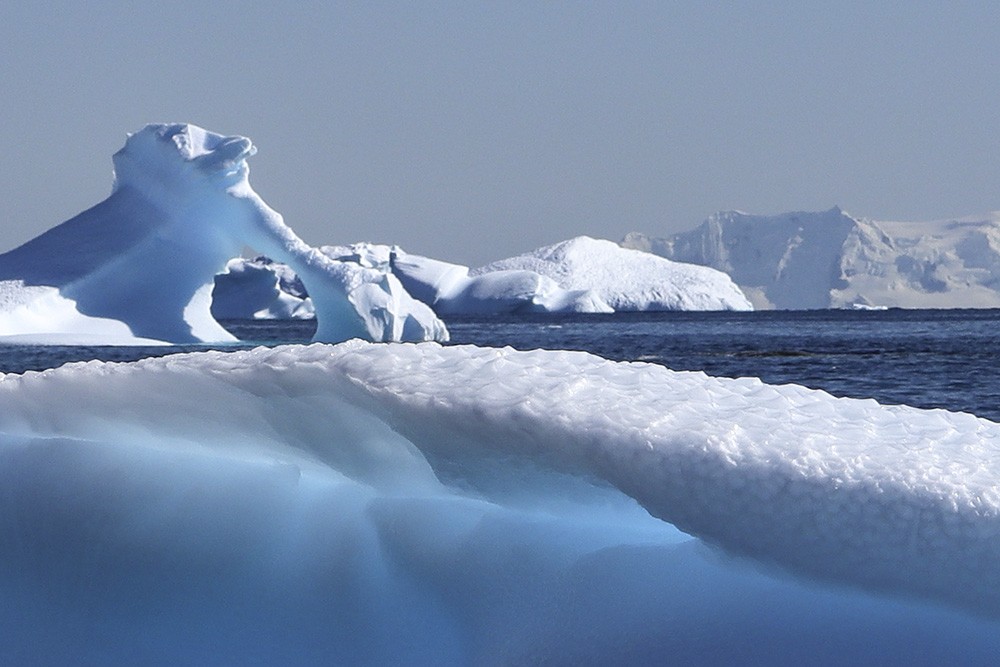
Wildlife in Neumayer Channel
Marine mammal species found in Neumayer Channel
The Neumayer Channel is home to a diverse range of marine mammal species. These charismatic creatures can often be spotted swimming and playing in the channel's icy waters. Some of the marine mammal species that can be found in the Neumayer Channel include:
-
Humpback Whales: These magnificent creatures migrate to the Antarctic waters during the summer months and are known for their acrobatic displays, such as breaching and tail slapping. Neumayer Channel provides a rich feeding ground for humpback whales, as it is abundant in small fish and krill.
-
Orca Whales: Also known as killer whales, orcas are apex predators and can be seen hunting in the Neumayer Channel. These intelligent creatures are known for their distinctive black-and-white colouring and are a spectacular sight to behold.
-
Leopard Seals: Although they may have a fearsome reputation, leopard seals are an essential part of the Antarctic ecosystem. These solitary creatures can often be seen resting on ice floes or hunting for penguins and other prey in the channel's waters.
-
Weddell Seals: One of the most well-known seal species in Antarctica, Weddell seals are perfectly adapted to the icy conditions of the region. They can often be seen resting on ice shelves or swimming in the Neumayer Channel, creating a charming sight for visitors.
Bird species and their behaviour in Neumayer Channel
The Neumayer Channel is also home to an array of bird species that rely on its waters for feeding and breeding. These birds exhibit fascinating behaviours and add to the vibrant ecosystem of the channel. Some of the bird species found in Neumayer Channel include:
-
Gentoo Penguins: These charismatic penguins are known for their distinctive bright orange beaks and white and black plumage. They can often be seen diving into the water in search of fish and krill. The Neumayer Channel provides an excellent breeding ground for gentoo penguins, with several colonies nesting along its shores.
-
Adelie Penguins: Adelie penguins are another common sight in the Neumayer Channel. These small penguins are known for their distinctive black heads and white bellies. They have a unique nesting behaviour, with large colonies congregating on rocky shores and ice-free areas.
-
Antarctic Skuas: These medium-sized seabirds are opportunistic predators, often seen stealing food from other birds or scavenging for carrion. They are highly adaptable and can be found throughout the Antarctic region, including the Neumayer Channel.
-
Black-browed Albatrosses: These majestic seabirds can often be spotted gliding effortlessly above the Neumayer Channel. Known for their large wingspan and distinctive dark eyebrow markings, black-browed albatrosses spend a significant portion of their lives at sea, only returning to land for breeding.
The Neumayer Channel's diverse range of marine mammal and bird species make it a haven for wildlife enthusiasts and researchers alike. Visitors to the channel have the unique opportunity to witness these fascinating creatures in their natural habitat, contributing to our understanding of Antarctic ecosystems and the need for conservation efforts.
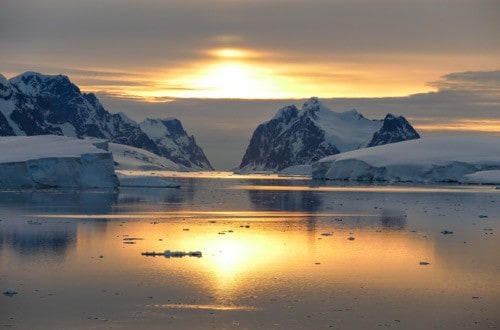
Glaciers of Neumayer Channel
The formation and characteristics of glaciers in the Neumayer Channel
The Neumayer Channel is not only home to a diverse range of wildlife but also features impressive glaciers that contribute to the breathtaking beauty of the region. Glaciers are formed when snowfall exceeds snowmelt over a long period of time, causing the accumulation of compacted snow and ice. Over time, the weight of the accumulated snow and ice causes the lower layers to compress, forming glaciers.
The glaciers in the Neumayer Channel are primarily tidewater glaciers, which means that they flow down from the mountains and extend into the water, often forming impressive ice cliffs that can be seen from the channel. These glaciers are constantly moving and calving, where chunks of ice break off and float away, creating large icebergs.
One of the notable glaciers in the Neumayer Channel is the Spert Island Glacier. This glacier is characterized by its icy-blue appearance, towering ice cliffs, and crevasses. It is a popular attraction for visitors, who can witness the awe-inspiring spectacle of the glacier calving and the birth of new icebergs.
Glacial retreat and its impact on the channel
Like many other glaciers around the world, the glaciers in the Neumayer Channel are experiencing retreat due to climate change. As temperatures rise, the glaciers melt at a faster rate than they can accumulate new snowfall, resulting in a loss of mass and a retreat of the glacier's terminus.
The retreat of glaciers has a significant impact on the Neumayer Channel and its ecosystem. As glaciers melt, freshwater is released into the channel, affecting salinity levels and creating new habitats for marine organisms. The increased melting of glaciers also contributes to rising sea levels, which can have implications for coastal communities and ecosystems.
Furthermore, the loss of glaciers can have cascading effects on the wildlife in the area. For example, some species of seals and penguins rely on the presence of ice and glaciers for breeding and resting. With the retreat of glaciers, their habitats may be altered or diminished, affecting their survival.
It is crucial to monitor and study the glaciers in the Neumayer Channel to better understand the impacts of climate change and develop conservation strategies. By doing so, we can work towards preserving the unique beauty and ecological balance of this remarkable region for future generations to enjoy.
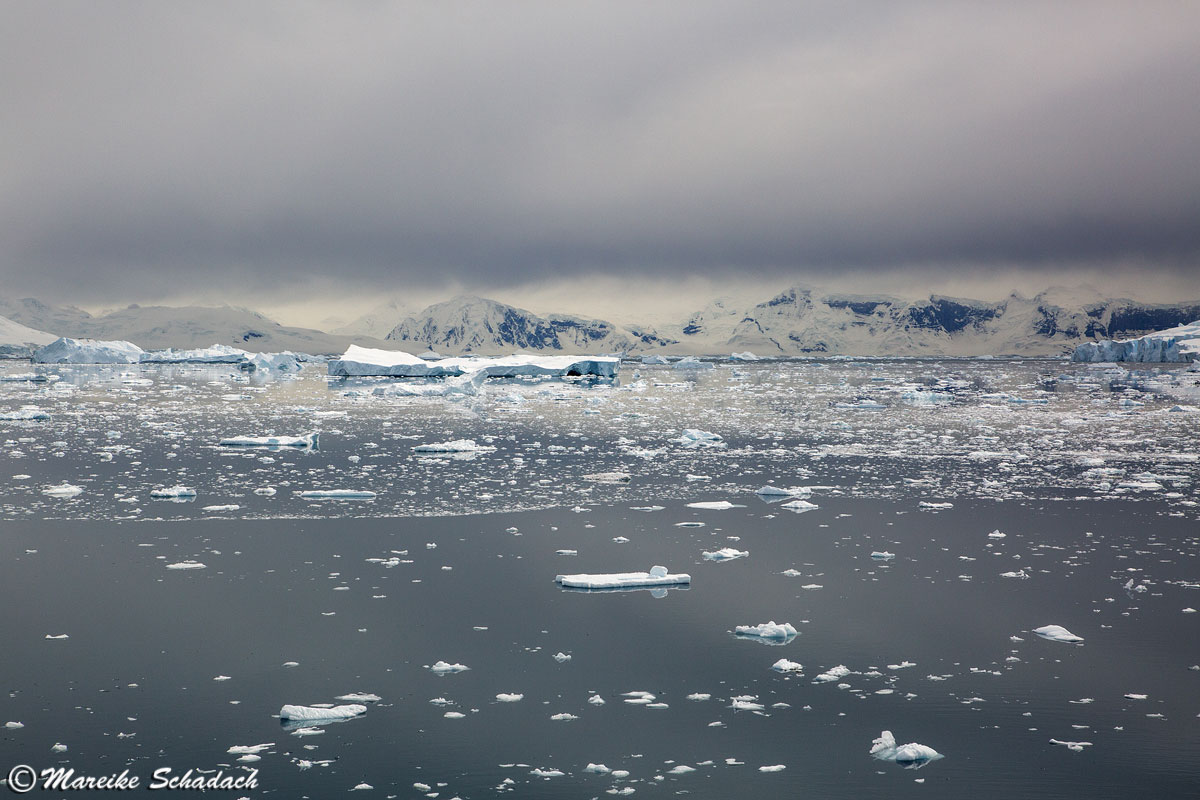
Scenic Beauty of Neumayer Channel
Stunning landscapes and scenic views of Neumayer Channel
The Neumayer Channel not only offers a diverse range of wildlife but also boasts stunning glaciers that add to the breathtaking beauty of the region. These glaciers contribute to the magnificent landscapes and scenic views that attract visitors from around the world.
Imagine standing in Neumayer Channel, surrounded by towering ice cliffs of the Spert Island Glacier with its icy-blue appearance. The crevasses and the constant movement of the glacier create a captivating spectacle that is truly awe-inspiring. The sight of the glacier calving and the birth of new icebergs is a remarkable experience that will leave you in awe of the power and beauty of nature.
Additionally, the Neumayer Channel offers panoramic views of the surrounding mountains, snow-covered peaks, and crystal-clear water. The combination of these elements creates a picturesque setting that is perfect for photography enthusiasts and nature lovers alike.
Photography opportunities in Neumayer Channel
Neumayer Channel provides endless opportunities for capturing stunning photographs. The unique mix of glacial landscapes, marine life, and dramatic lighting creates a photographer's dream. Here are some photography opportunities that await you in the Neumayer Channel:
- Glaciers: Capture the sheer size and beauty of the glaciers as they flow down from the mountains and extend into the water. Focus on the intricate patterns of the ice, the mesmerizing blue hues, and the dramatic ice cliffs.
- Icebergs: Photograph the unique shapes, textures, and colours of the icebergs that have broken off from the glaciers. These floating sculptures make for captivating subjects, especially when juxtaposed against the surrounding scenery.
- Wildlife: Neumayer Channel is home to a variety of wildlife, including seals and penguins. Capture these charismatic creatures as they rest on ice floes or swim gracefully through the channel's waters.
- Landscape: Don't forget to capture the overall landscape of the Neumayer Channel, showcasing the mountains, fjords, and breathtaking sunsets or sunrises. Experiment with different angles and compositions to create unique and compelling images.
Whether you are a professional photographer or simply a photography enthusiast, the Neumayer Channel offers countless opportunities for capturing unforgettable moments in nature. The scenic beauty and unique characteristics of this region make it a truly remarkable destination worth exploring.
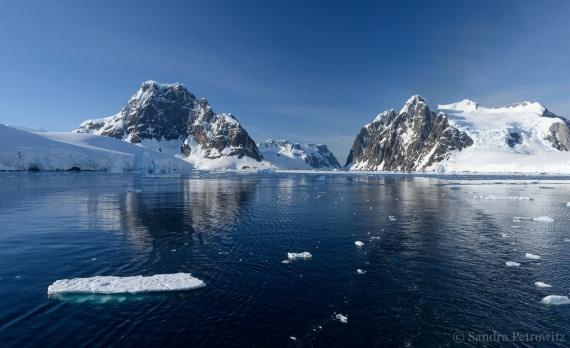
Activities and Tourism in Neumayer Channel
Cruises and tours in Neumayer Channel
Embarking on a cruise or tour in the Neumayer Channel is a popular way to explore this stunning region and experience its beauty up close. There are several options available for visitors, ranging from luxury cruises to smaller expedition vessels, each offering a unique perspective of the channel.
During a cruise or tour, you will have the opportunity to navigate through the channel and witness its breathtaking landscapes and wildlife. The knowledgeable guides on board will provide insightful commentary, allowing you to learn about the area's history, geology, and wildlife. You may even have the chance to visit nearby islands and witness penguin colonies, adding to the overall experience.
Furthermore, the boats used for these tours are equipped with observation decks, allowing you to capture stunning photographs of the surrounding scenery. Imagine being on the deck, camera in hand, capturing the majestic glaciers, playful seals, and graceful penguins as they go about their daily activities.
Adventure activities and recreational opportunities
If you are an adventure enthusiast, Neumayer Channel offers a range of thrilling activities that will get your adrenaline pumping. Some of the activities you can partake in include:
- Kayaking: Paddle through the pristine waters of the channel and get up close to the icebergs and wildlife. This unique vantage point allows for an intimate connection with the natural environment.
- Hiking and trekking: Lace up your hiking boots and explore the surrounding mountains and trails. The region offers a variety of hiking options, ranging from easy walks to more challenging treks.
- Photography workshops: Enhance your photography skills with workshops and courses led by experienced photographers. Learn how to capture the beauty of the channel and its wildlife through the lens.
- Wildlife watching: Join guided tours and excursions that focus on spotting and observing the diverse wildlife in the area. From seals lounging on ice floes to penguins waddling on the shores, there is always something fascinating to see.
These adventure activities provide an immersive and unique way to explore the Neumayer Channel, allowing you to create unforgettable memories and connect with nature on a deeper level.

Environmental Conservation in Neumayer Channel
Efforts to protect the ecosystem of Neumayer Channel
When exploring the Neumayer Channel, it's important to be aware of the efforts being made to protect and conserve its delicate ecosystem. These conservation initiatives are crucial in preserving the unique biodiversity and stunning landscapes that make the channel so special.
One of the main conservation efforts in the area is the establishment of protected areas. The Neumayer Channel is part of the Antarctic Treaty System, which designates certain areas as Special Areas for scientific research. These protected areas help to minimize human impact and provide refuge for the diverse marine life and bird species that call this region home.
Another conservation initiative is responsible tourism practices. Tour operators and cruise companies are increasingly adopting sustainable tourism practices in the Neumayer Channel. This includes following strict guidelines to avoid disturbing wildlife, minimizing waste and pollution, and respecting the natural environment. By practising responsible tourism, we can ensure that future generations can continue to enjoy the beauty of the channel.
Challenges and Future Conservation Initiatives
While there are ongoing efforts to protect the Neumayer Channel, there are also challenges that need to be addressed. Climate change poses a significant threat to the delicate ecosystems of the Antarctic, including the channel. Rising temperatures and melting ice can disrupt the balance of the ecosystem and have a profound impact on the wildlife that relies on the channel for survival.
To combat these challenges, there are several future conservation initiatives being proposed. These include promoting scientific research to better understand the effects of climate change and implement measures to mitigate its impact. Additionally, there are discussions about creating stricter regulations for tourism activities in the area, ensuring that all visitors adhere to sustainable practices and minimize their environmental footprint.
Ultimately, the conservation of the Neumayer Channel requires a collective effort from governments, scientists, tour operators, and visitors. By working together, we can protect this pristine environment for future generations to enjoy.

Cultural Significance of Neumayer Channel
Indigenous cultures and their connection to Neumayer Channel
When you explore the Neumayer Channel, you will discover not only its natural beauty but also its cultural significance to indigenous communities. The channel holds deep historical and spiritual importance to the indigenous cultures of the region, including the Inuit and Yupik peoples.
For generations, these indigenous communities have relied on the channel for sustenance and transportation. They have developed an intimate knowledge of the channel's currents, tides, and wildlife, passing down this knowledge through storytelling and traditions.
The channel is also home to important cultural sites, such as ancient hunting grounds and ceremonial sites. These sites hold a wealth of knowledge about the history and traditions of these indigenous cultures.
Local communities and their relationship with the channel
The Neumayer Channel is important not only to indigenous cultures but also to the local communities that live and work in the surrounding areas. The channel is a vital resource for fishing, providing a sustainable livelihood for many local residents.
Local communities have a deep connection to the channel, not only for economic purposes but also for recreational activities such as boating, kayaking, and wildlife watching. The channel serves as a gathering place for community events and celebrations, fostering a sense of community and connection.
Furthermore, the channel is an important part of the local cultural identity. It features prominently in local art, literature, and music, becoming a symbol of pride and heritage.
By recognizing and respecting the cultural significance of the Neumayer Channel, we can ensure that its preservation goes beyond its natural beauty. It becomes a testament to the rich history, traditions, and livelihoods of the indigenous and local communities that have coexisted with it for centuries.
